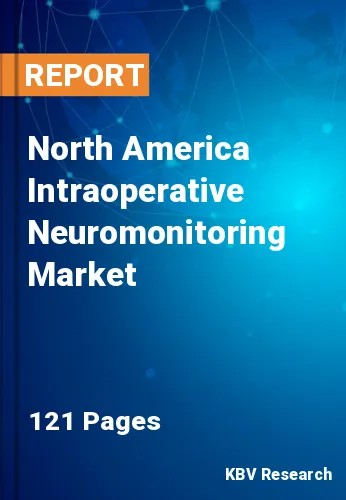The North America Intraoperative Neuromonitoring Market would witness market growth of 5.3% CAGR during the forecast period (2023-2030).
The availability of robust clinical evidence supporting the efficacy and safety of intraoperative neuromonitoring (IONM) has been a crucial driver for its adoption. Numerous studies have demonstrated the positive impact of IONM on reducing the incidence of neurological complications in various surgical procedures. Surgeons and healthcare providers are more likely to embrace technologies with a solid foundation of scientific validation. Integrating IONM into medical education and training programs has played a pivotal role in fostering its adoption. Aspiring surgeons become more familiar with the benefits and applications of IONM during their training, they are more likely to incorporate it into their practice once in the field.
The paramount concern for patient safety and the desire to minimize surgical risks have driven the widespread adoption of IONM. The real-time monitoring of neural structures allows surgeons to identify and address potential complications promptly, reducing the likelihood of adverse outcomes. Hospitals and surgical centers prioritize technologies that align with their commitment to patient safety. The continuous evolution of IONM technologies has played a crucial role in its adoption. Advanced electrodes, improved signal processing algorithms, and more user-friendly monitoring systems have contributed to the reliability and accessibility of IONM.
In Canada, the aging population is more prone to require neurosurgical treatments for ailments such as spinal problems, brain tumors, and cerebral aneurysms. Aging is associated with an increased prevalence of musculoskeletal conditions, such as osteoarthritis and spinal degeneration, in Canada. According to the Canadian Institute for Health Information, Canada's senior population of those 65 and older will expand by 68% over the next 20 years. It has more than tripled in size in the last 40 years. In 2017, it was around 6.2 million. It is anticipated to reach 10.4 million in 2037. This population in Canada is projected to increase by 2.1 times by 2037 from its size in 2017. Thus, the factors mentioned above will drive the regional market growth.
The US market dominated the North America Intraoperative Neuromonitoring Market by Country in 2022, and would continue to be a dominant market till 2030; thereby, achieving a market value of $1,842.3 million by 2030. The Canada market is experiencing a CAGR of 7.7% during (2023 - 2030). Additionally, The Mexico market would exhibit a CAGR of 6.8% during (2023 - 2030).
Free Valuable Insights: The Intraoperative Neuromonitoring Market is Predict to reach USD 7 Billion by 2030, at a CAGR of 6%
Based on Source Type, the market is segmented into Insourced Monitoring, and Outsourced Monitoring. Based on End User, the market is segmented into Hospitals, and Ambulatory Surgical Centers (ASCs). Based on Products & Services, the market is segmented into Services, Systems, and Accessories. Based on Application, the market is segmented into Spinal Surgery, Neurosurgery, Orthopedic Surgery, ENT Surgery, Vascular Surgery, and Others. Based on Modality, the market is segmented into Electromyography (EMG), Electroencephalography (EEG), Motor Evoked Potentials (MEPs), Somatosensory Evoked Potentials (SSEPs), Visual Evoked Potentials (VEPs), and Brainstem Auditory Evoked Potentials (BAEPs). Based on countries, the market is segmented into U.S., Mexico, Canada, and Rest of North America.
By Source Type
By End User
By Products & Services
By Application
By Modality
By Country
Our team of dedicated experts can provide you with attractive expansion opportunities for your business.

